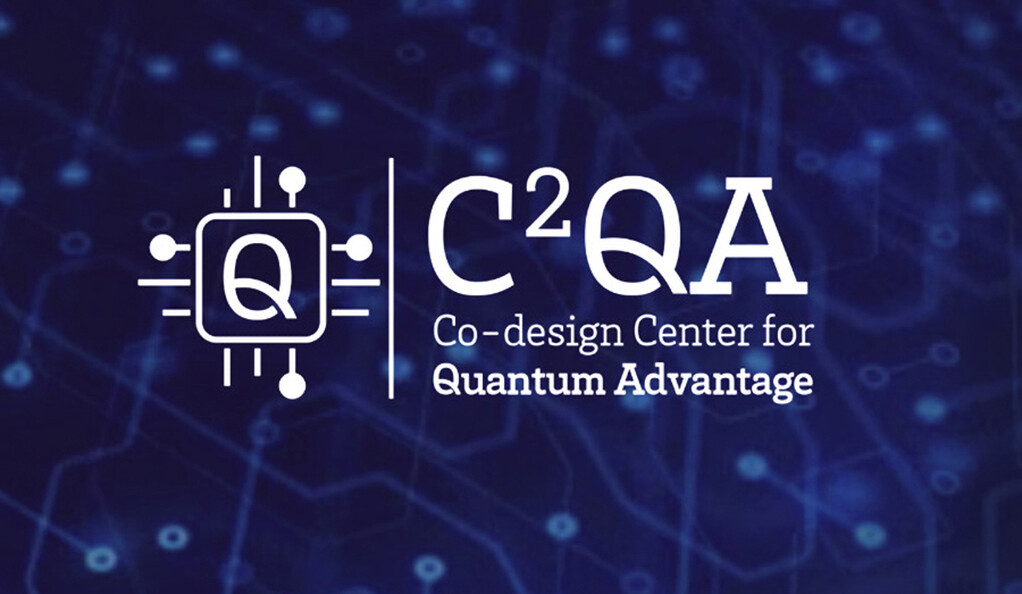
Yale will play a major role in a new, national center for quantum research announced Aug. 26 by the White House and the United States Department of Energy.
The new Co-design Center for Quantum Advantage (C2QA), led by Brookhaven National Laboratory, launches with funding of $115 million over five years. It is one of five National Quantum Information Science Research Centers announced by the government. Steven Girvin, the Eugene Higgins Professor of Physics at Yale, will serve as director of C2QA and have a dual appointment at Yale and Brookhaven’s Energy and Photon Sciences Directorate.
In all, two dozen institutions will participate in C2QA, which will bring together scientists and engineers from a variety of backgrounds with the goal of dramatically advancing the state of the art in quantum information processing and communication.
Besides Girvin, the center will include many prominent Yale researchers, including Robert Schoelkopf, Charles Ahn, Michel Devoret, Leonid Glazman, Peter Rakich, and Hong Tang. Devoret and Tang, along with Leandros Tassiulas, also were recently named to lead Yale’s participation in a new Center for Quantum Networks, funded by the National Science Foundation.
Girvin spoke with YaleNews about C2QA’s mission and Yale’s involvement.

How do you envision the scope of C2QA’s work?
The mission of our center is to carry out the fundamental interdisciplinary research that will break us out of the current era of noisy, intermediate-scale quantum computers and lead the way forward into the era of practical, large-scale quantum computers that will offer a large computational advantage over traditional computers. We will also focus on key quantum communication technologies needed to network clusters of quantum computers.
How involved will Yale researchers be in this effort?
Yale researchers will play a key role in this very large effort (24 institutions, 75 investigators). I will be the scientific director for the center. Robert Schoelkopf (applied physics) will lead the devices group, seeking to dramatically improve the performance of quantum bits (qubits) and related hardware. Hong Tang (electrical engineering) will lead the devices sub-group on transduction of quantum signals between the microwave domain, where the computers and superconducting qubits work, and the optical domain where optical fiber can be used for quantum networking. Peter Rakich (applied physics) will design hybrid optical/mechanical systems for signal transduction. Michel Devoret (applied physics) will lead the devices sub-group on quantum error correction. Leonid Glazman (physics) will provide theoretical support to the devices group by modeling various sources of noise and errors in superconducting qubits. Charles Ahn (applied physics) will synthesize and characterize new materials for quantum devices. This is an important new area of collaboration for us.
How important is quantum research to the future of society in general?
The first quantum revolution nearly a century ago brought us the technological revolution of the 20th century based on the transistor, the laser, and the atomic clock. These inventions have given us the computer revolution, optical fiber communication and the global positioning system, all of which are vital to the world economy. As important as these inventions are, we have now come to understand that these devices do not harness the full power of quantum machines. We are in the early stages of a second quantum revolution in which we are beginning to be able to harness this full power for useful tasks. The scientists who invented the transistor, laser, and atomic clock could not imagine the 20th-century technological revolution they would trigger. Similarly, we do not yet know all the applications the second quantum revolution will bring, but we anticipate that they could be as revolutionary as the first. If we can build practical, large-scale quantum computers, we hope to be able to design new catalysts for energy-efficient synthesis of chemicals such as fertilizers, design new drug molecules that will bind to specific targets, and rapidly solve complex optimization problems of great commercial and scientific importance.
What role has Yale expertise in quantum research played up to this point?
The first all-electronic quantum processor was invented by the Yale team a decade ago. Yale’s superconducting “circuit QED” architecture has been widely adopted and is now the industry standard for construction of solid-state quantum computers. Yale researchers are also world leaders in advancing quantum error correction and fault-tolerance. It is extremely challenging to build a large-scale system out of imperfect components in such a way that it works nearly perfectly. This “fault-tolerance” is challenging in traditional computer systems but much more challenging in quantum systems for two reasons. First, quantum hardware is still in a relatively primitive state. Second, the weird features of quantum mechanics that give quantum computers their power also make them highly vulnerable to errors and imperfections. The fact that when you make a measurement on a quantum system, you change it, raises particular challenges for detecting and correcting errors. The Yale team has contributed several out-of-the-box ideas to address these challenges and was the first to succeed in using error correction to extend the lifetime of quantum information.
How will you divide your time between Yale and Brookhaven, now that the center has launched?
Until the end of the pandemic I will be working remotely from home for both institutions on a 50-50 basis. My role at Brookhaven will be scientific administration of the center and the next few months will be devoted to standing up the center and building team cohesion among the researchers. My role at Yale will continue to be teaching and research, including research in the new center.